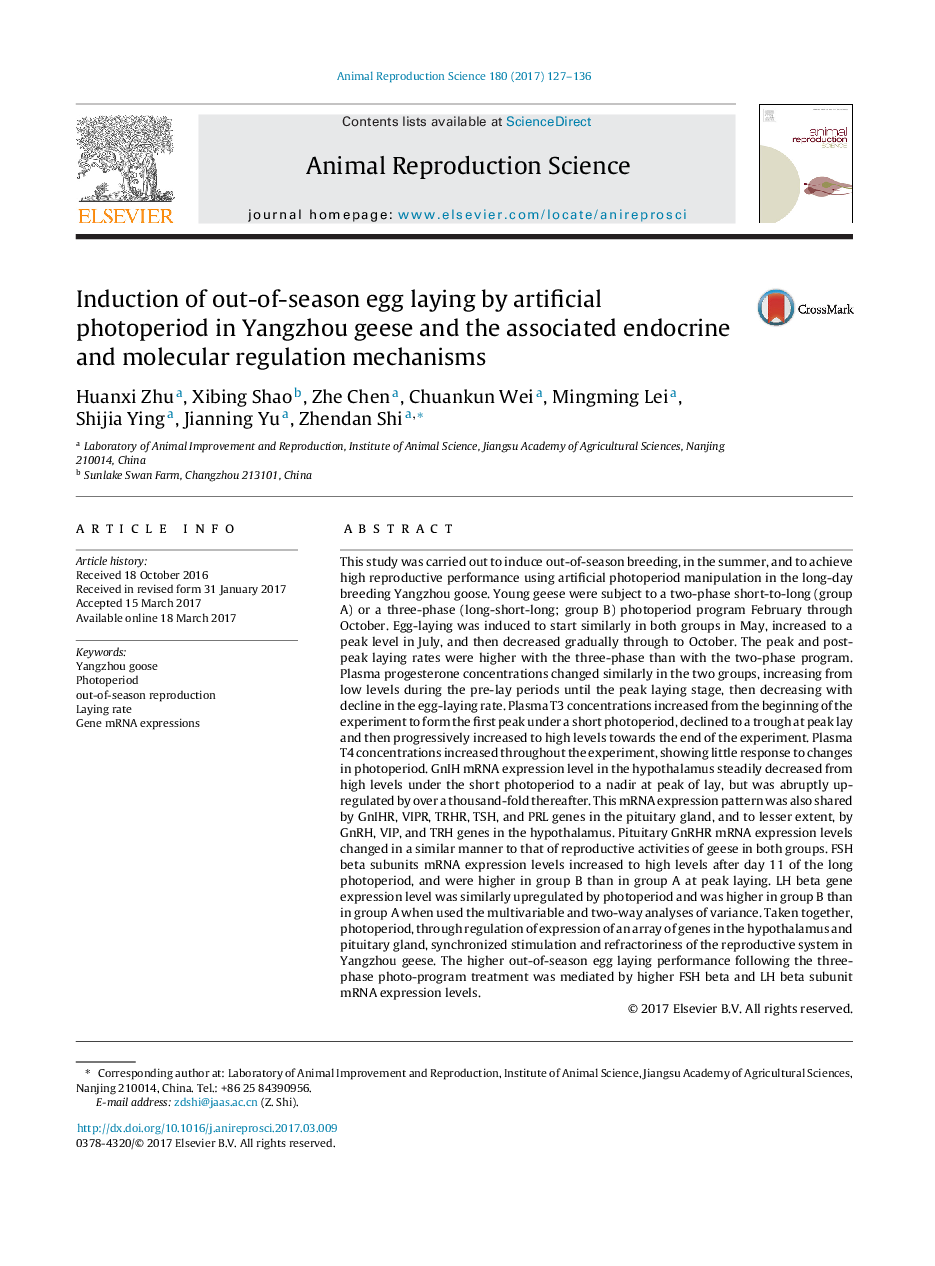| کد مقاله | کد نشریه | سال انتشار | مقاله انگلیسی | نسخه تمام متن |
|---|---|---|---|---|
| 5520268 | 1544697 | 2017 | 10 صفحه PDF | دانلود رایگان |
- Out-of-season breeding in the long day breeding Yangzhou goose.
- The higher egg laying performance following the three-phase photo-program treatment.
- The higher egg laying was mediated by higher FSH and LH mRNA expression levels.
This study was carried out to induce out-of-season breeding, in the summer, and to achieve high reproductive performance using artificial photoperiod manipulation in the long-day breeding Yangzhou goose. Young geese were subject to a two-phase short-to-long (group A) or a three-phase (long-short-long; group B) photoperiod program February through October. Egg-laying was induced to start similarly in both groups in May, increased to a peak level in July, and then decreased gradually through to October. The peak and post-peak laying rates were higher with the three-phase than with the two-phase program. Plasma progesterone concentrations changed similarly in the two groups, increasing from low levels during the pre-lay periods until the peak laying stage, then decreasing with decline in the egg-laying rate. Plasma T3 concentrations increased from the beginning of the experiment to form the first peak under a short photoperiod, declined to a trough at peak lay and then progressively increased to high levels towards the end of the experiment. Plasma T4 concentrations increased throughout the experiment, showing little response to changes in photoperiod. GnIH mRNA expression level in the hypothalamus steadily decreased from high levels under the short photoperiod to a nadir at peak of lay, but was abruptly up-regulated by over a thousand-fold thereafter. This mRNA expression pattern was also shared by GnIHR, VIPR, TRHR, TSH, and PRL genes in the pituitary gland, and to lesser extent, by GnRH, VIP, and TRH genes in the hypothalamus. Pituitary GnRHR mRNA expression levels changed in a similar manner to that of reproductive activities of geese in both groups. FSH beta subunits mRNA expression levels increased to high levels after day 11 of the long photoperiod, and were higher in group B than in group A at peak laying. LH beta gene expression level was similarly upregulated by photoperiod and was higher in group B than in group A when used the multivariable and two-way analyses of variance. Taken together, photoperiod, through regulation of expression of an array of genes in the hypothalamus and pituitary gland, synchronized stimulation and refractoriness of the reproductive system in Yangzhou geese. The higher out-of-season egg laying performance following the three-phase photo-program treatment was mediated by higher FSH beta and LH beta subunit mRNA expression levels.
Journal: Animal Reproduction Science - Volume 180, May 2017, Pages 127-136
